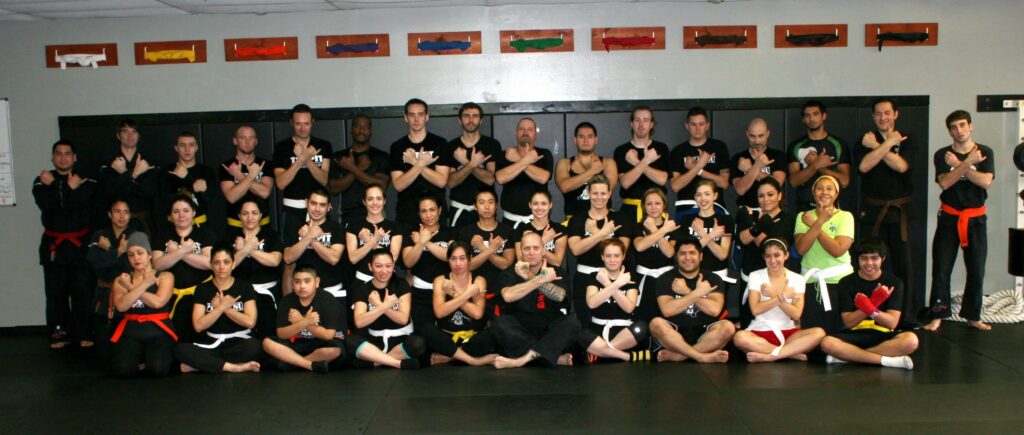Iron Mantis: The Fusion of Tradition and Innovation in Martial Arts

In the dynamic world of martial arts, few individuals have successfully blended ancient traditions with modern techniques as seamlessly as Sifu Jeff Hughes. With decades of experience in Karate, Hapkido, Kung Fu, Brazilian Jiu-Jitsu (BJJ), and Hawaiian Kempo, Sifu Jeff Hughes has crafted a groundbreaking system known as the Iron Mantis System. This unique approach preserves the integrity of traditional styles while addressing the demands of contemporary martial arts.
A Journey Through Martial Arts
Sifu Jeff Hughes began his martial arts training in the early 1970s, exploring disciplines like KajuKempo and Hapkido. By the late ’80s, his passion for martial arts expanded to include Chinese styles, leading him to discover Kung Fu in 1992. A chance encounter introduced him to the Praying Mantis system, where he immediately recognized its richness in tradition and effectiveness in close-range combat.
However, Sifu Jeff Hughes noticed gaps in long-range techniques and ground fighting within traditional styles. Determined to fill these gaps, he pursued additional training in Brazilian Jiu-Jitsu and Hawaiian Kempo, working with some of the best minds in the field. His dedication to understanding and integrating these styles has culminated in the creation of the Iron Mantis System.
The Birth of the Iron Mantis System
The Iron Mantis System is a seamless integration of disciplines that Sifu Jeff Hughes has mastered over the years. It combines the fluidity and precision of Praying Mantis Kung Fu with the striking techniques of Hawaiian Kempo and the grappling strategies of Brazilian Jiu-Jitsu. This hybrid system is designed to:
- Emphasize practical, high-percentage techniques.
- Adapt to various fighting ranges: close, long-range, and ground combat.
- Provide pathways for students of all levels to grow, from beginners to advanced practitioners.
According to Sifu Jeff Hughes, the secret to this system’s success lies in its organic evolution. “It wasn’t planned,” he explains. “Years of teaching and experimenting with students turned my school into a laboratory. The system grew naturally from there.”
Tradition Meets Modernity
For Sifu Jeff Hughes, the preservation of tradition is equally as important as innovation. He places great emphasis on lineage, ensuring that his teachings honor the generations of martial artists who came before him. “When you learn from a system with a history, you’re not just learning techniques—you’re inheriting the wisdom of those who perfected it over centuries,” he says.
The Iron Mantis System also incorporates traditional elements like Qigong, Tai Chi, and meditation to promote physical and mental well-being. These softer practices balance the intensity of combat training and make the system accessible to students of all ages, from young children to seniors.
Beyond the Mat: Practical Benefits
One of the most remarkable aspects of the Iron Mantis System is its adaptability. Whether a student seeks self-defense skills, competitive fighting techniques, or personal growth, the system delivers. Sifu Jeff Hughes’ students have benefited from:
- Enhanced confidence and discipline.
- Improved physical fitness and mental clarity.
- A deeper appreciation for the art and science of martial arts.
Moreover, the system’s focus on sparring, playing hands, and partner drills ensures that students can apply their skills in real-world scenarios. “It’s one thing to learn a technique,” Sifu Jeff Hughes explains. “But can you make it work under pressure? That’s where the real growth happens.”
A Legacy in Motion
Sifu Jeff Hughes’ Iron Mantis System stands as a testament to the power of innovation within martial arts. By respecting tradition and embracing evolution, he has created a system that not only empowers students but also carries forward the legacy of martial arts into the future.
Whether you’re a beginner looking to embark on a martial arts journey or a seasoned practitioner seeking to enhance your skills, the Iron Mantis System offers a pathway to growth, mastery, and self-discovery. As Sifu Jeff Hughes puts it, “Martial arts isn’t just about fighting—it’s about becoming the best version of yourself.”
Ready to learn more? Dive into the Iron Mantis System and discover how tradition and innovation can transform your martial arts practice.
THE MANTIS CAVE PODCAST

